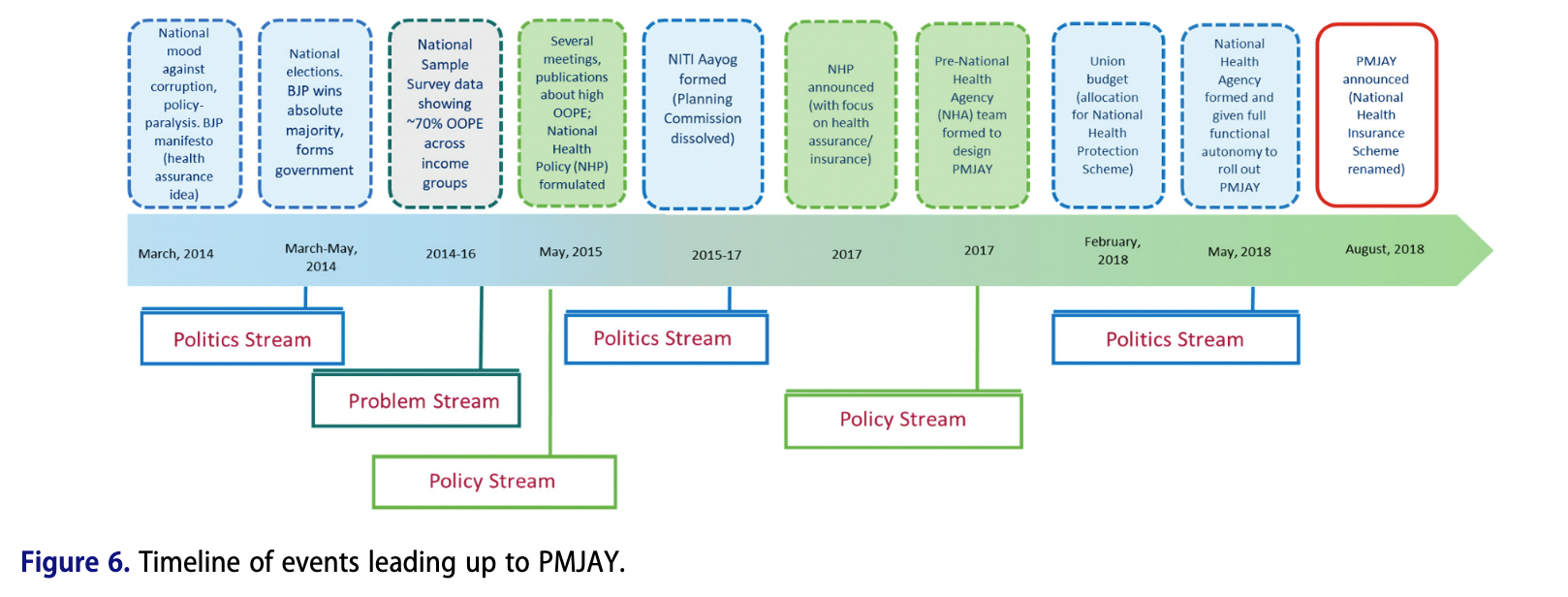Abstract
In 2018, India’s Prime Minister announced a new health insurance program, Pradhan Mantri Jan Arogya Yojana (PMJAY), aiming to cover over 500 million people. This paper seeks to document and explain the emergence of PMJAY on India’s political and policy agendas. We analyze media, election manifestos, legislative debates, and health budgets to compare PMJAY’s presence on India’s policy agenda to previous health programs. We then apply Kingdon’s Multiple Streams Framework to explain the program’s emergence and adoption, validating our data and interpretations through consultations with Indian health policy experts. Comparing respective launch years, PMJAY was covered in national newspapers 37 to 212 times more than previous flagship health programs, although it was not more prominent in parliamentary debates or in the health budget. Events in the problem, politics, and policy streams converged to enable its prominence. Health policy elites who favored insurance as a policy to address out-of-pocket health expenditures gained influence after the 2014 election victory of the Bharatiya Janata Party (BJP). PMJAY’s naming and branding, scale, timing, implementation style, and design aligned with both the BJP’s ideology and political strategy. PMJAY represents the increased prominence of health programs in Indian politics, although primarily on the political and media agenda, rather than on the budgetary and legislative agenda during this period. The political forces that facilitated its emergence also shaped its design in ways that are likely to affect the Indian health system’s ability to provide comprehensive financial protection in the future.
Resources
- Kalita, Anuska, Kevin Croke. 2023. “The Politics of the Health Policy Agenda in India: The Case of the PMJAY Program.” Health Systems & Reform 9:1. doi: 10.1080/23288604.2023.2229062
